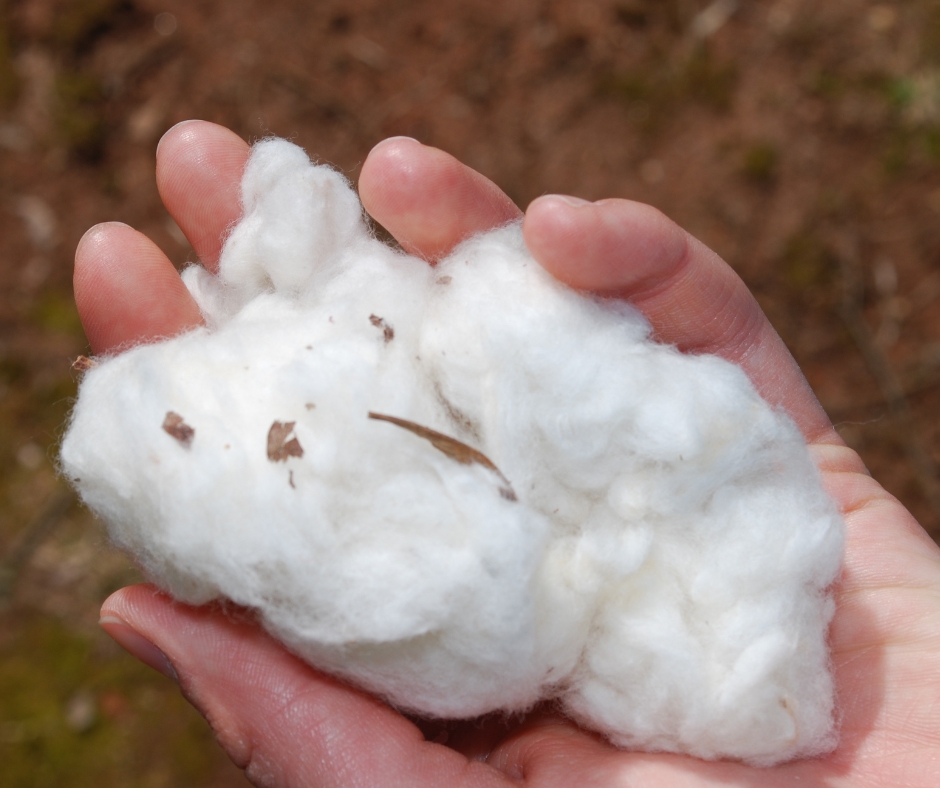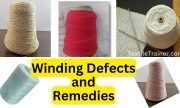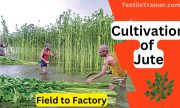What is Bale Management?
Bale management involves selecting and distributing bales to achieve an acceptable quality and cost. Bale management involves selecting cotton bales based on fiber characteristics to achieve an acceptable and economic processing condition and a constant yarn quality, according to UsterTM Technology.
In another word, Bale management is defined as selecting bales from a fiber quality database and distributing them in accordance with the management plan in order to achieve the desired quality and cost level. Finally we can say, bale management involves selecting the right quality at the right time.

Factors To Be Considered:
The factors or points to be considered before production and implementation of bale management are:
- Documentation on the process and product specification: a successful fiber selection and blending strategy should be based on well-documented information about the process and the product specifications. The more inclusive this information is, the better the chance of implementing a successful strategy. Documentation of process and product specification should be a result of integrated effort that involves personnel from all sectors that will be affected by the fiber selection or the blending strategy. Very often, we face a questions about how the fiber selection process or the addition of a new cotton type to the cotton mix may affect the dyeing or the finishing performance of fabrics. So, documentation on the process and product specification should be consider before bale management.
- Creation of fiber quality parameter database: there is the strong relationship between fiber quality parameter and end product quality. Again process specification is influenced by fiber parameter also. Thereby profiling and engineering of end product is completely dependent on specification of fiber parameter.
- Evaluation of fiber quality database for suitable process and product: fiber database represent information of the different cotton groups utilized or to be utilized by the mill. Evaluation of fiber database involves grouping of different types of cotton by variety, source, etc., and evaluating the statistical limits of each group. A mill can use software like EFSTM, BIAS for evaluation. Manually also it can be produced. It is a part of the routine process of fiber selection.
- Evaluation of cost profile of a suitable cotton mix: a complete characterization of a cotton mix can only be achieved through description of both the fiber profile and the cost profile of the mix. Determining the cost profile is critical for making profper purchasing decisions of cotton fibers and for minimizing the cost of raw material with respect to the overall manufacturing cost of yarn.
- Select fiber profile suitable for product and process: the essence of a fiber selection strategy is to determine the average levels of fiber attributes required for a particular cotton mix. Most mills rely on general information in determining the average levels of fiber attributes. This approach is generally suitable in the initial process of implementing system. However, conditions such as the type and the range of the technology used, the product range, and the type of cotton utilized are never static. They do change and often at a fast rate. It is important, therefore, that the company utilizes reliable fiber-to-yarn relationships that are suitable for its specific process and product.
- Selection of fiber blending strategy: fiber selection mainly influences the level of quality of the end product. Fiber blending, on the other hand, mainly influences the consistency of the output quality levels. Accordingly, the essence of a fiber blending strategy is to determine the maximum allowable variability within a mix and to ensure that the within-lay down variability falls below this maximum limit. There are various software (EFS, BIAS) that use capable algorithms methods to enhance the consistency of fiber profiles both between and within mixes.
- Preparation of bale lay down management plan: depending on blending strategy, production load of machinery and floor spaces available bale lay down plan to be prepared. It is the tool of monitoring the blending strategy and proper bales selection.
References
- Chowdhury, M. F. (2016). Manual of Short Staple Spinning . Dhaka: Granthanir Prokashoni.
- Hossain, M. S. (2014). Introduction to Textile Engineering. Dhaka: Books Fair Publications.
- Kadolph, S. J. (2009). Textiles. New Delhi: Dorling Kindersley.
- Siddique, D. H. (n.d.). Natural Fibers. Dhaka.







Hi! Do you know if they make any plugins to help with Search Engine Optimization? I’m trying to get my blog to rank for some targeted keywords but I’m not seeing very good results. If you know of any please share. Thanks!
thanks too
These are truly great ideas in regarding blogging.You have touched some pleasant things here. Any way keep upwrinting.
thanks for comments.
Very informative blog.Much thanks again. Keep writing.
keep visit our site….
Hey, thanks for the blog article.Much thanks again. Really Cool.
please share our article…
Thanks so much for the article post.Thanks Again. Really Cool.
thanks too.
Absolutely pent articles, Really enjoyed looking through.
please support us…
Thanks, Quite a lot of forum posts!essay how to write writing thesis proposal writing service reviews
Okay
Very nice post. I just stumbled upon your blog and wished to say that I have really enjoyed surfing around your blog posts. In any case I’ll be subscribing to your rss feed and I hope you write again soon!
Thank you dear. Stay with us.
get asked for to obtain a free If you like to play games with
thank too…
I value the article post.Really thank you! Cool.
thanks too. please support us.
Amazing! Its actually remarkable article, I have got much clear idea about from this piece of writing.
please support us.
Appreciate you sharing, great blog.Much thanks again.
Aside from this rule of superiority, otherSatan Fruit powers can react to each other in an array of unpredictable manners.Free Account – New Free Accounts And Passwordsfree accounts
Hi there colleagues, its great piece of writing concerning tutoringand fully defined, keep it up allthe time.
Wow, great post.Much thanks again. Really Cool.
Thanks too
I really like and appreciate your blog.Much thanks again. Fantastic.
I needed to thank you for this fantastic read!! I certainly enjoyed every bit of it. I’ve got you bookmarked to check out new stuff you post…
Thanks
Wow! This could be one particular of the most helpful blogs We’ve ever arrive across on this subject. Basically Magnificent. I am also an expert in this topic so I can understand your hard work.
Thanks for your nice complement.
The highlight feature is the Virtual Reality technology
Hello, just wanted to mention, I enjoyed this article.It was funny. Keep on posting!
I am so grateful for your blog article. Awesome.
Great info. Many thanks.how to write a good college application essay thesis editing expert assignment writers
I really enjoy the post.Really looking forward to read more. Fantastic.
Major thankies for the article.Thanks Again. Keep writing.
Wow, great blog.Really thank you! Keep writing.
Wow, great blog.Thanks Again.
Amazing issues here. I’m very glad to see your article. Thank you alot and I’m looking ahead to touch you. Will you kindly drop me a e-mail?
please drop here your email…
I really like it when folks get together and share thoughts.Great blog, stick with it!
thanks for comments…….
This is a really good tip particularly to those new to the blogosphere. Simple but very accurate information… Thank you for sharing this one. A must read post!
thanks too….
I really enjoy the blog. Cool.
Thanks so much for the blog article.Thanks Again. Really Cool.
Awesome blog article.Much thanks again. Really Cool.
Wow, great blog article.
I truly appreciate this blog article.Much thanks again.
keep visit our site..
I truly appreciate this blog. Much obliged.
Appreciate you sharing, great blog article.Thanks Again. Cool.
A big thank you for your blog post.Really looking forward to read more. Really Great.
I really like and appreciate your article.Thanks Again. Cool.
I truly appreciate this post.
A big thank you for your blog.Much thanks again. Really Great.
I really liked your blog article. Really Cool.
Thanks so much for the blog.Really thank you! Really Cool.
Wow, great blog post.Really looking forward to read more.
wow, awesome blog article.Thanks Again. Great.
Great blog article.Really thank you! Really Cool.
Thanks so much for the article post.Really thank you!
Very neat blog article. Much obliged.
Wow, great article.Really looking forward to read more. Really Cool.
Very neat blog.Thanks Again. Great.
A big thank you for your post.Thanks Again. Much obliged.
Appreciate you sharing, great post.Much thanks again. Really Great.
Enjoyed every bit of your article post.Much thanks again.
Welcome. Stay connected
I really enjoy the blog post.Much thanks again.
Thank you for your blog post.Really looking forward to read more. Much obliged.
Im grateful for the blog.Much thanks again. Much obliged.
Very informative blog article.Much thanks again. Really Cool.
I am so grateful for your post.Really looking forward to read more. Really Cool.
Really informative post.Much thanks again. Cool.
Say, you got a nice blog.Thanks Again. Great.
wow, awesome article.Much thanks again. Awesome.
Thanks again for the blog.Really looking forward to read more. Much obliged.
Great, thanks for sharing this blog.Really thank you!
Great, thanks for sharing this article post.Really thank you! Really Great.
Great blog. Fantastic.
Thanks for the article post. Really Cool.
Major thankies for the article post.Really thank you! Want more.
Thanks for the blog.Really thank you! Want more.
Thanks so much for the post.Thanks Again. Awesome.
I value the blog post.Really looking forward to read more. Really Great.
Thanks so much for the article post.Thanks Again. Want more.
Thank you ever so for you article post.Really thank you! Great.
A big thank you for your blog.Really thank you! Much obliged.
Very good blog.Much thanks again. Want more.
Thanks so much for the blog post.Really looking forward to read more. Fantastic.
Im grateful for the blog post.Much thanks again. Really Great.
I value the post.Much thanks again. Want more.
I appreciate you sharing this blog article. Much obliged.
I am so grateful for your blog article.Really thank you! Will read on…
Thanks so much for the blog article.Really looking forward to read more. Much obliged.
Appreciate you sharing, great post.Really thank you! Much obliged.
Thanks a lot for the blog. Really Cool.
Thanks so much for the blog post.Really thank you! Want more.
Really appreciate you sharing this blog article.Really thank you! Keep writing.
Thanks a lot for the article.Really thank you! Awesome.
Im obliged for the blog post.Really thank you! Really Great.
Hey, thanks for the blog.Much thanks again. Fantastic.
Really appreciate you sharing this blog post.Thanks Again. Really Cool.
Awesome post.Much thanks again.
Really appreciate you sharing this blog post.Much thanks again. Awesome.
Appreciate you sharing, great article.
Very neat article.Really thank you!
Thanks for the post.Really looking forward to read more. Keep writing.
I really liked your blog post.Much thanks again. Will read on…
Thanks a lot for the article.Really looking forward to read more. Fantastic.
I really enjoy the article post.Really thank you! Want more.
Say, you got a nice article post.Really looking forward to read more. Want more.
Thanks again for the blog article.Thanks Again. Cool.
A round of applause for your post.Thanks Again. Really Cool.
I am always browsing online for posts that can aid me. Thanks!
wow, awesome blog. Great.
Great, thanks for sharing this blog post. Really Cool.
A big thank you for your blog article.Much thanks again. Will read on…
Enjoyed every bit of your post.Really thank you! Want more.
I really liked your article. Great.
I really liked your post. Great.
I really liked your blog.Really thank you! Keep writing.
Great post.Thanks Again.
Appreciate you sharing, great post.Really thank you! Really Cool.
I think this is a real great blog.Thanks Again. Really Cool.
Very informative blog.Really thank you! Awesome.
Really appreciate you sharing this blog article.Thanks Again. Really Cool.
Thank you ever so for you article.Thanks Again. Really Cool.
Im thankful for the blog.Really looking forward to read more. Fantastic.
Thank you for your article post.Really thank you! Will read on…
I truly appreciate this blog article.Much thanks again. Want more.
Thank you for sharing your info. I truly appreciate your efforts and I will be waiting for your next write ups thanksonce again.
I truly appreciate this blog. Great.
Very informative post.Really looking forward to read more. Much obliged.
Fantastic blog article.
Appreciate you sharing, great post.Really thank you! Really Great.
Awesome blog article. Much obliged.
Hey, thanks for the post.Thanks Again. Really Great.
A round of applause for your blog post. Want more.
I love the efforts you have put in this, thank you for all the great articles.
I value the blog article.Much thanks again. Awesome.
Thanks a lot for the blog post. Will read on…
Saved as a favorite, I really like your blog!
Hey, thanks for the post.Really thank you! Really Cool.
I really enjoy the blog article.Thanks Again. Keep writing.
Wow, great blog article.Really looking forward to read more. Awesome.
I appreciate you sharing this blog.Thanks Again. Awesome.
Very neat blog article. Cool.
wow, awesome blog article. Awesome.
I loved your post.Thanks Again. Will read on…
Very informative article post.Thanks Again. Really Great.
Thank you ever so for you article. Want more.
Thanks for sharing your thoughts on this. Regards
Say, you got a nice post.Thanks Again. Great.
I really enjoy the blog article. Want more.
Enjoyed every bit of your blog.Much thanks again. Really Cool.
I was suggested this blog by my cousin. I am not sure whether this post is written by him as nobody else know such detailed about my trouble. You are wonderful! Thanks!
Thanks too
Say, you got a nice blog post.Really looking forward to read more. Great.
wow, awesome post.Much thanks again. Great.
Most welcome
I value the blog.Thanks Again. Really Great.
I think this is a real great article post.Much thanks again. Will read on…
This is one awesome blog.Thanks Again. Really Cool.
I really like and appreciate your blog.Thanks Again. Keep writing.
I really like and appreciate your article post.Really looking forward to read more. Much obliged.
Im thankful for the post.Much thanks again. Awesome.
I value the article.Thanks Again. Will read on…
Great blog article.Really thank you! Awesome.
Major thanks for the blog article. Awesome.
A big thank you for your post. Much obliged.
I think this is a real great post.Really thank you! Fantastic.
Thanks a lot for the article.Really thank you! Fantastic.
Thanks again for the blog.Really thank you! Want more.
I loved this article. Thank you for writing it.
This post is really a nice one it helps new net users, who are wishing for blogging.
Appreciate you sharing, great post.Thanks Again. Keep writing.
Thanks so much for the article post.Thanks Again. Cool.
Im thankful for the blog article.Really thank you! Really Great.
I really like and appreciate your article.Really looking forward to read more.
Really informative blog.Thanks Again. Will read on…
I think this is a real great article.Thanks Again. Cool.
I really like and appreciate your blog.Much thanks again. Want more.
Thank you ever so for you article.Really thank you! Awesome.
Awesome blog post.Really thank you!
Kerassentials are natural skin care products with ingredients such as vitamins and plants that help support good health and prevent the appearance of aging skin. They’re also 100% natural and safe to use. The manufacturer states that the product has no negative side effects and is safe to take on a daily basis. Kerassentials is a convenient, easy-to-use formula. https://kerassentialsbuynow.us/
Really appreciate you sharing this article post.Really thank you! Great.
Thank you ever so for you blog article.Thanks Again. Fantastic.
I really like and appreciate your post.Really looking forward to read more. Awesome.
Fantastic article post.Really thank you! Really Cool.
Thanks a lot for the article post. Keep writing.
I really enjoy the article post. Cool.
Wow, great blog post.Really thank you! Want more.
Thank you ever so for you article.Much thanks again. Much obliged.